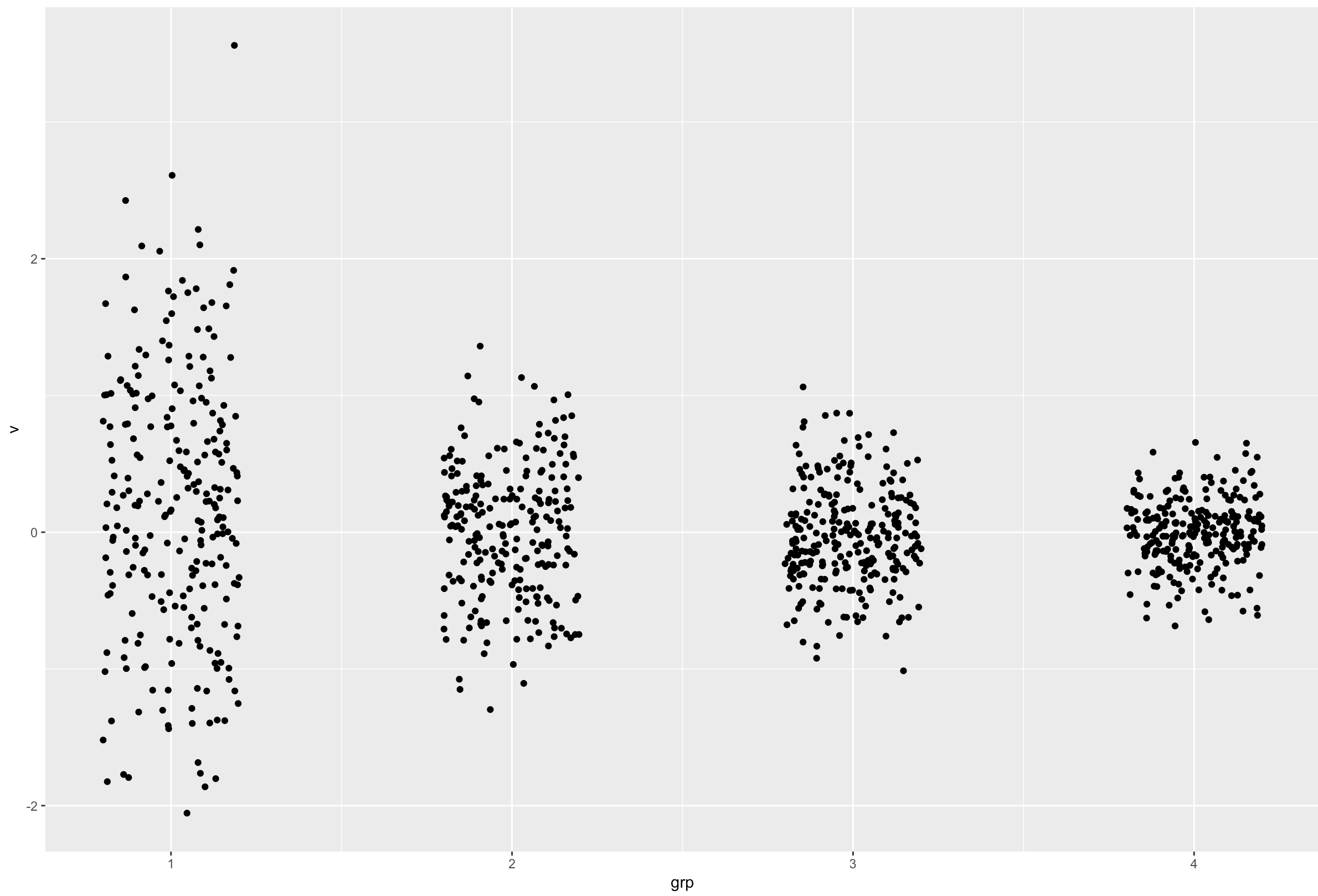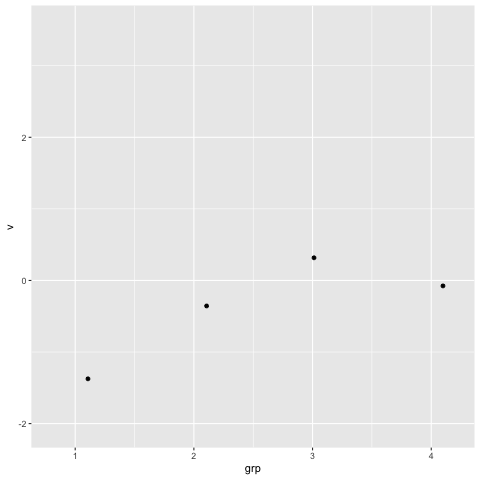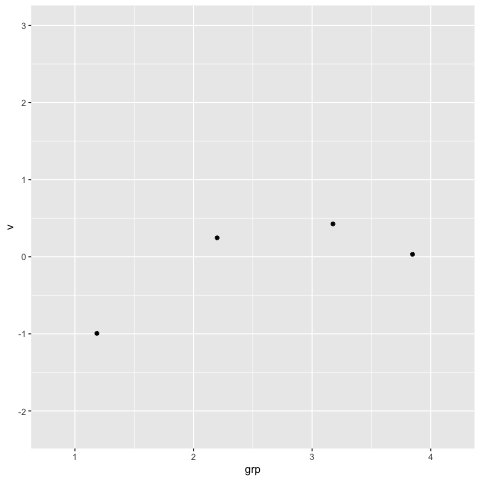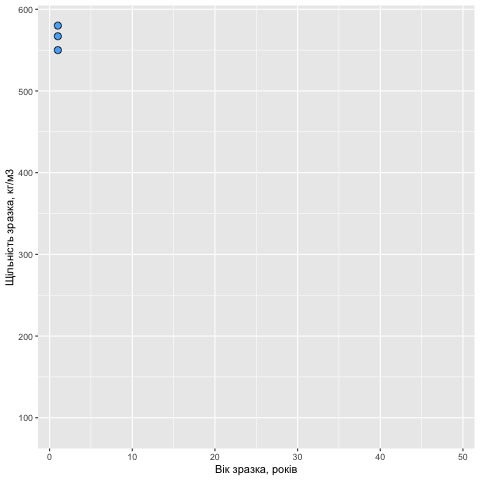-
Notifications
You must be signed in to change notification settings - Fork 309
New issue
Have a question about this project? Sign up for a free GitHub account to open an issue and contact its maintainers and the community.
By clicking “Sign up for GitHub”, you agree to our terms of service and privacy statement. We’ll occasionally send you account related emails.
Already on GitHub? Sign in to your account
Transition_reveal for both points and geom_smooth #209
Comments
|
Column |
|
Edit your first post above with a |
|
I think this is similar to something I'm trying to accomplish now: Static plot = final frame of animation: Attempt (doesn't work) in I think it's failing because I think this is a nice animation for showing how points can accumulate to make a distribution. Here's a workaround that's quite slow to render since it quadratically explodes the number of rows in the input: |
|
I think you should be able to accomplish what you want by giving a unique group aesthetic to each point |
|
Thanks @thomasp85. Could you elaborate? I'm also new to most things |
|
All geoms have a group aesthetic even though it is unused by many. gganimate used it though, in order to figure out which graphic elements are part of the same “entity”. If you do |
|
(assume you mean Hmm, not sure I follow. These both look the same as above to me: Anyway, I'm ~basically fine with how the second one looks (constructing the full "scatter boxplot" gradually), the problem is that it's a bit awkward to create the data to mimic the My aim is to make the first one use |
|
Thanks, I have already got that through this code |
|
@MichaelChirico can you provide a reproducible example... the code you have given produces an error as |
|
@thomasp85 sorry, bad copy-pasting... included in original post here |
|
hmm... I can see that adding a unique group doesn't really alter the output, though it should... I'll look into it |
|
Sorry, I am not so good in writing examples :(
So I get something like this |
|
Ah... I'm messing up my head because I'm currently doing some last minute changes to the transition api's... Setting |
|
reprex below library(reprex)
library(ggplot2)
library(gganimate)
library(data.table)
DT = data.table(
grp = sample(4L, 1e3, TRUE)
)
DT[ , v := rnorm(.N, sd = 1/.BY$grp), by = grp]
DT[ , grpI := seq_len(.N), by = grp]
# Example 1
ggplot(DT, aes(grp, v)) +
geom_jitter(aes(group = seq_along(v)), width = .2) +
transition_reveal(grp, grpI)
# Example 2
ggplot(DT[DT, .(i.grpI, x.grp, x.v),
on = .(grpI <= grpI, grp == grp), allow.cartesian = TRUE],
aes(x.grp, x.v)) +
geom_jitter(aes(group=seq_along(x.v)), width = .2) +
transition_states(
i.grpI,
transition_length = 1,
state_length = 2
)Created on 2018-12-10 by the reprex package (v0.2.0). |
|
thanks, looking good! |
|
@thomasp85 looking exactly like I envisioned! love it! excellent! |
|
@MichaelChirico be aware that I will soon deprecate the |
|
@Janzeero your issue is entangled in a lot of stuff that I'm working on right now - a fix will be provided soon |
|
@Janzeero just to be sure - Is this the result you are after? |
|
@MichaelChirico the changes I talked about has been merged and you should now do: ggplot(DT, aes(grp, v, group = seq_along(v))) +
geom_jitter(width = .2) +
transition_reveal(grpI)to get the correct result |
|
I would be curious to know how this was produced with the new API. There are some tutorials online, but they all use the deprecated
|
|
I join the request of @fmmattioni. @thomasp85 could you please provide an example of how to make that last plot? I just also found examples with deprecated API like this. |
|
My last response includes the code |
|
Ok, sorry, I didn't get it! Thanks! |
Where exactly? I only see the code for the scatter plot... Thanks! |
I also am not seeing any code to produce the animated points + smooth chart. When I run this code, I get the following error: ggplot(mtcars, aes(x = mpg, y = hp)) +
geom_point() +
geom_smooth(method = 'loess', formula = 'y ~ x', se = FALSE) +
transition_reveal(mpg) |






Here is a data. I can make through transition_reveal appearing geom_points. Looks nice, but I also wanna add exponential regression and visualise both simultaneously. Transition_reveal makes render neither with both smooth and points, nor with just smooth. Its possible only for geom_points. Whats wrong?
Gif only with geom_point
Static with both point and line
Here is a code and error. Should be exponential visualisation of decomposition process of tree wood, where t - age of sampling, Pt - its density.
gif<-ggplot(data, aes(t,Pt))+geom_point(shape=21, aes(fill=group),col="black",size=3)+stat_smooth(method="nls", data=decay, method.args = list(formula = y~a*exp(-b*x), start = list(a=570,b=2*log(2)/570)), se=F,size=0.5, col="black",linetype="dotted")+transition_reveal(Pt,t)Error:
Error in[.data.frame(df, , c("alpha", "colour", "size", "linetype")) : undefined columns are chosenThank you a lot for any suggestion and attention!
The text was updated successfully, but these errors were encountered: